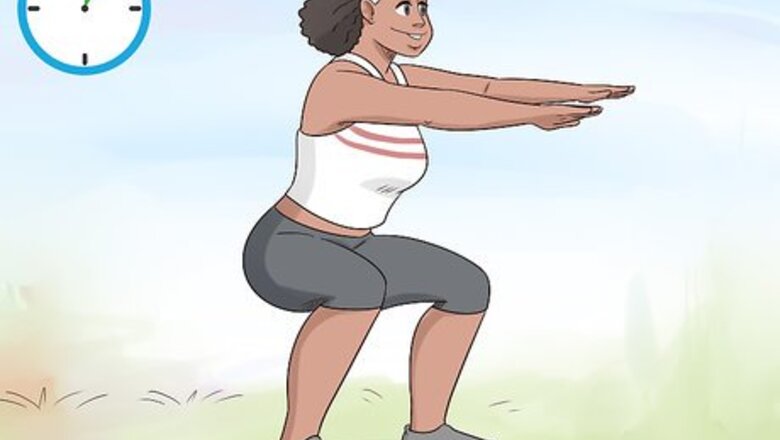
views
Finding Time for Workouts
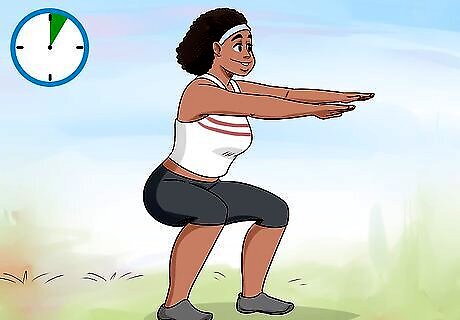
Start by planning smaller workout sessions. If you're new to making an exercise routine, begin by scheduling short, but frequent sessions. Begin with 5-10 minute sessions a day and gradually work your way up to 30-minute or even hour-long sessions. With exercise, every session counts. It's better to have 3-4 20-minute workouts a week than a single 2-hour session. If you can't find time for a full 30-minute session, try breaking your workout into several smaller sessions. You might, for example, fit in 2 15-minute workouts instead. You'll form a habit more easily if you exercise every day, even if it is only for 10-15 minutes. If you have a busy day, try to squeeze in at least a brisk walk, a few running laps around the block, or a 15-minute Pilates session.

Repurpose your free time for exercising if you have a busy schedule. Sometimes if you have a hectic schedule, you have to make time for exercise. Evaluate how you spend your average day and, wherever you can, delegate extra time to working out. If you spend lots of time on social media, for example, exercise with that free time instead.
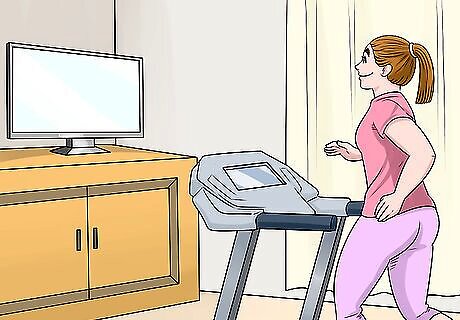
Schedule gym time around your favorite TV series if this motivates you. Watching a TV show you love can be good motivation to exercise at a specific time. Look up when the next episode of your favorite TV show is and plan your workout at that time or watch episodes using a video streaming website as you work out. If you're currently watching Parks and Recreation, for example, you could take your phone with you to the gym and watch it as you run on the treadmill. You can also work out from home while watching your favorite show on TV.
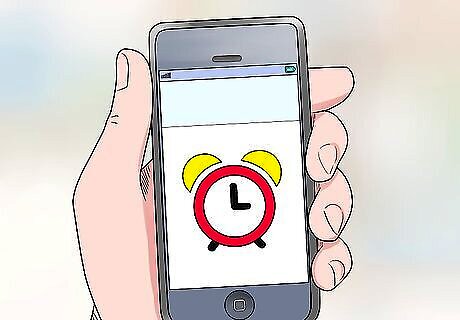
Set your alarm an hour or half-hour earlier if you don't have time during the day. If your day schedule is a little hectic, try waking up 30-60 minutes earlier than you usually do. That could give you enough time to fit in a morning run or exercise session before your day begins. If you work out in the morning, go to sleep wearing your exercise clothes so you don't waste time getting ready.
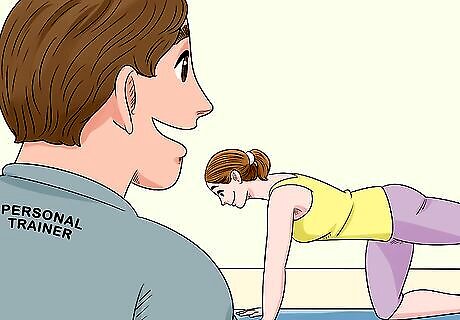
Choose to workout at a specific time, if that motivates you. Holding yourself responsible for your workouts can help you make exercise a priority. You could purchase a gym membership, join a sports team, or find a workout partner so you have a specific time and place to workout. You can also take exercise classes at your local gym or recreation center. Depending on your preference, you could take yoga, Zumba, aerobics, cycling, strength training, or other popular fitness classes. If you'd prefer to work one-on-one with someone, hire a personal trainer. They can help you improve your overall fitness and hold you responsible for a specific appointment.

Plan an at-home exercise routine as an alternative to gym workouts. You don't need to go to the gym to get a good workout. If you don't have time for traveling, you can always exercise by doing chores, jogging around your neighborhood, or working out at home. If you have a dog, for example, you could count walking it as exercise. You don't need special equipment to work out at home. Following exercise videos on YouTube is a great way to get a quality workout without leaving your home.
Organizing Your Exercise Schedule

Write your exercise schedule online or on paper. Physically writing your schedule will help you feel more accountable than keeping it in your mind. Depending on what's most convenient for you, you could write it in a paper, online, or app planner. You can, for example, write in your schedule, "March 10th: Go to the gym's crossfit class at 7 PM." EXPERT TIP Laila Ajani Laila Ajani Fitness Trainer Laila Ajani is a Fitness Trainer and founder of Push Personal Fitness, a personal training organization based in the San Francisco Bay Area. With over 10 years as a trainer and exercise specialist, Laila has expertise in competitive athletics (gymnastics, powerlifting, and tennis), personal training, distance running, and Olympic lifting. Laila is certified by the National Strength & Conditioning Association (NSCA), USA Powerlifting (USAPL), and she is a Corrective Exercise Specialist (CES). Laila Ajani Laila Ajani Fitness Trainer Creating a workout schedule in your calendar is an effective way to stay on track with your fitness goals. Nowadays, most people use some form of calendar, whether it's electronic like Google Calendar or a paper-based one. By planning workouts out on your calendar, you can ensure that you don't forget them and stick to your schedule.

Start slowly when you begin. If you did not regularly exercise before, don't start off with high intensity or long workouts. You may accidentally injure yourself or you might find that your exercise schedule is too difficult to keep up with. Instead, start slowly. Increase the intensity of your workouts over time. If you need to, just start out with 10, 15, or 20 minute sessions. As you get stronger and fitter, you can extend the length of your workout. If you can't run a mile, break it up into intervals. Run for 5 minutes and then walk for 5 minutes. Over time, run for longer and walk for shorter periods until you can run the whole mile.
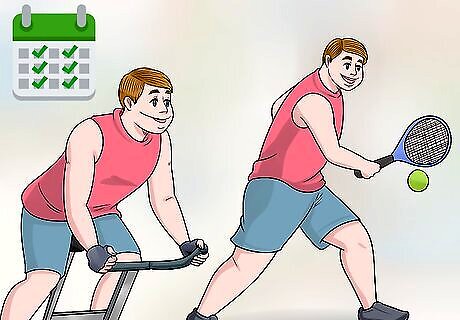
Plan 2-3 cardiovascular workouts into your weekly schedule. Cardiovascular workouts raise your heart rate. They may include walking, running, playing sports, cycling, or doing aerobics. Try to include around 2-3 cardiovascular sessions a week. You could, for example, go on a run on Monday, attend a cycling class on Wednesday, and play tennis on Sunday for 3 of your weekly workout sessions.

Add 2-3 strength training exercises to your weekly schedule. Strength training workouts build muscle mass. They may include weight lifting, crossfit training, or using weight machines. To keep your schedule balanced, alternate between cardiovascular and strength training exercises every day. You could, for example, use weight machines on Tuesday and attend a crossfit class on Saturday for 2 of your weekly workout sessions.
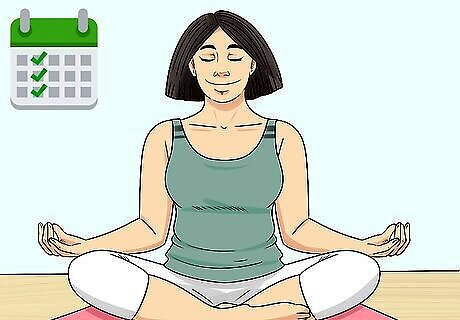
Plan 1-2 rest days into your week. Giving your body a day to recover can prevent injuries and exercise burnout. Take it easy on at least 1 day a week and plan a light, relaxing activity instead of your workout routine. On your rest day, for example, you could do yoga, meditate, stretch, or go on a walk.

Alternate between cardio exercise and strength training. To get the most out of your workouts, do cardio 1 day and strength training the next. Incorporate rest days into your schedule as well so you don't overdo it. For instance, do cardio on Monday, strength training on Tuesday, rest on Wednesday, cardio on Thursday, strength training on Friday, rest on Saturday, and cardio on Sunday.
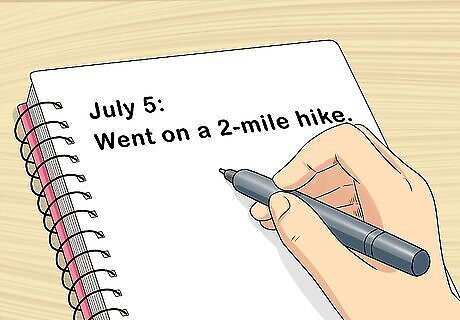
Log your workouts. After you've finished an exercise session, write it down in your schedule. Include information like how long your session was, how many steps you took, what you weighed, and any other important details. After working out, for example, you could write in your schedule, "November 23rd: Went on a 2-mile hike."
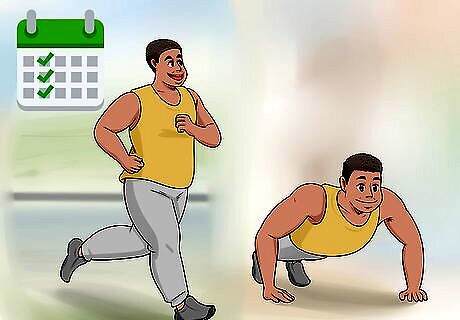
Plan at least one cardio and strength training workout, if you have a busy schedule. If you don't have time to exercise every day, working out 2-3 days a day is a good start for your exercise schedule. Plan a cardio workout and a strength training workout, at minimum, every week to keep your heart healthy while building your muscles. If you only have time for 3 workouts, for example, you could plan 2 morning runs and 1 crossfit session.
Making Your Schedule a Habit
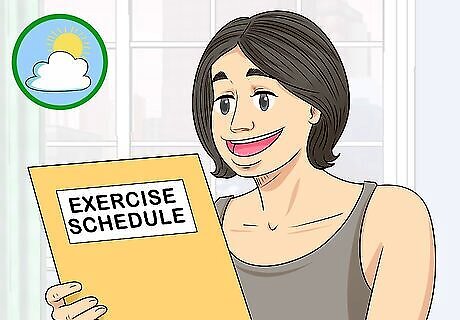
Check your exercise schedule every morning. When you wake up, look at your exercise schedule before you do anything else. That way, you can form a mental picture in your head of your daily routine. If you write your schedule down, pin it up somewhere near your bed so you can see it right when you wake up.

Do workouts that you enjoy. If you hate weightlifting and are constantly lifting dumbbells in the gym, exercise can seem like a chore. Instead, fill your schedule with exercises that you love so you look forward to following your schedule. If you love being in the water, for example, you might swim laps for a cardio workout or attend a water aerobics class.
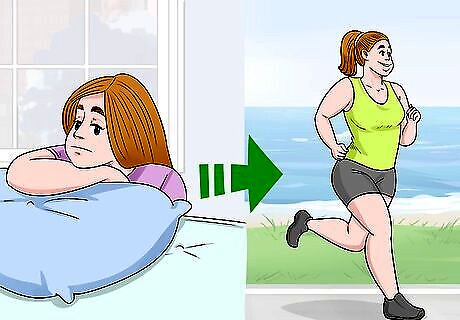
Follow your schedule when you don't feel like exercising. Establishing your new routine is even more important on days where working out is a struggle. If you're not in the mood for working out, think about the long-term benefits of exercising and how important following your exercise routine is to you. Since exercise boosts your endorphins, you may even feel better after working out. EXPERT TIP Laila Ajani Laila Ajani Fitness Trainer Laila Ajani is a Fitness Trainer and founder of Push Personal Fitness, a personal training organization based in the San Francisco Bay Area. With over 10 years as a trainer and exercise specialist, Laila has expertise in competitive athletics (gymnastics, powerlifting, and tennis), personal training, distance running, and Olympic lifting. Laila is certified by the National Strength & Conditioning Association (NSCA), USA Powerlifting (USAPL), and she is a Corrective Exercise Specialist (CES). Laila Ajani Laila Ajani Fitness Trainer It's okay if you don't feel motivated every day, but it's crucial to establish a sense of discipline. A consistent workout routine is the key to achieving fitness goals. It is essential to remain determined and committed to your plan. Select a suitable time of day that fits your schedule. Dedicate around 30 to 60 minutes to exercise, and stick with it.
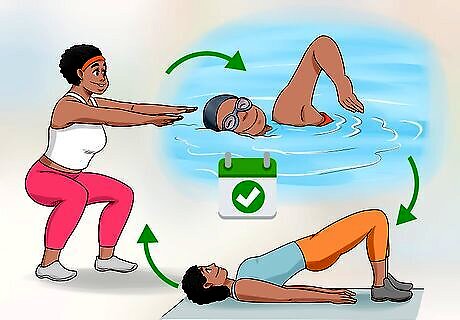
Give your exercise schedule 6 weeks to become a routine. Although the saying traditionally goes that it takes 21 days to establish a habit, it usually takes more like 6 weeks. Push through your schedule for at least 6 weeks and, by the time you make it that long, it should be much easier to follow. If your exercise schedule is still hard to follow, you may want to vary the types of exercises you're doing or how long your workout sessions are.



















Comments
0 comment